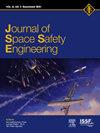The political and legal landscape of space debris mitigation in emerging space nations
IF 1.7
Q3 ENGINEERING, AEROSPACE
引用次数: 0
Abstract
The issue of space debris and its impact on space sustainability is a growing concern that requires collective action from all nations. Over the past decade, the number of spacefaring nations has increased, as evidenced by the number of satellites launched by emerging space nations and by an increase in the number of applications for United Nations Committee on the Peaceful Uses of Outer Space (UN COPUOS) membership from emerging member states. More recently, there has been an increase in emerging space nations stating their commitment to join the COPUOS Long-term Sustainability (LTS) 2.0 Working Group, as well as nations who have opted to join as signatories to initiatives such as “Net Zero Space” (e.g., Azercosmos, EgSA, GISTDA), and the Artemis Accords (e.g., Nigeria, Rwanda, and Angola). These initiatives share a common goal of promoting the sustainable and responsible use of space to ensure the long-term sustainability of space activities, including: 1) the recognition of the need for sustainable practices; 2) the importance of promoting cooperation in long-term sustainability between all nations; 3) the support of international guidelines and best practices; and 4) the recognition of the increasing role and contribution of emerging space nations.
Given the rapid diversification of the space sector, and in accordance with Part C International Cooperation, Capacity-Building and Awareness of the 2019 COPUOS Long Term Sustainability guidelines, many emerging nations continue to face challenges in implementing space debris mitigation and removal measures. The aim of this paper is threefold: 1) showcase examples of emerging space nations who are actively supporting the sustained use of space at a national, regional, and international level, which includes complying with existing binding requirements concerning space debris within national laws; 2) discuss how the Space Sustainability Rating (SSR) provides opportunities for emerging space nations to progress in their efforts to participate in seeking space sustainability; and 3) provide an analysis using the SSR for several missions launched by emerging space nations including recommended steps for increased sustainability in both the design phase and during operations. The study aims to identify potential challenges and opportunities in the adoption of the SSR by emerging space nations, and dispel the perception that sustainable design, operations, and implementation of the LTS guidelines is a barrier for emerging space nations. The selection of nations chosen for the analysis of this paper aims to ensure a representative sample of diverse space market sizes and maturity, with particular consideration given to geographic diversity.
新兴空间国家减缓空间碎片的政治和法律形势
空间碎片问题及其对空间可持续性的影响日益受到关注,需要所有国家采取集体行动。在过去十年中,航天国家的数量有所增加,新兴空间国家发射的卫星数量以及新兴成员国申请加入联合国和平利用外层空间委员会(和平利用外空委员会)的数量有所增加就证明了这一点。最近,越来越多的新兴空间国家表示他们承诺加入外空委员会长期可持续性(LTS) 2.0工作组,以及选择加入“净零空间”(例如,Azercosmos, EgSA, GISTDA)和阿尔忒弥斯协定(例如,尼日利亚,卢旺达和安哥拉)等倡议的国家。这些倡议有一个共同目标,即促进可持续和负责任的空间利用,以确保空间活动的长期可持续性,包括:1)认识到可持续做法的必要性;2)促进各国长期可持续合作的重要性;3)支持国际准则和最佳做法;4)认识到新兴空间国家日益增长的作用和贡献。鉴于空间部门迅速多样化,并根据《2019年外空委员会长期可持续性准则》C部分《国际合作、能力建设和认识》,许多新兴国家在执行空间碎片减缓和清除措施方面继续面临挑战。本文的目的有三个方面:1)展示正在积极支持在国家、区域和国际各级持续利用空间的新兴空间国家的例子,其中包括在国家法律范围内遵守有关空间碎片的现有约束性要求;2)讨论空间可持续性评级(SSR)如何为新兴空间国家在参与寻求空间可持续性的努力中取得进展提供机会;3)利用SSR对新兴空间国家发射的几个任务进行分析,包括在设计阶段和运行期间提高可持续性的建议步骤。该研究旨在确定新兴空间国家采用SSR的潜在挑战和机遇,并消除可持续设计、操作和实施LTS指南是新兴空间国家障碍的看法。本文所选择的分析国家的选择旨在确保具有不同空间市场规模和成熟度的代表性样本,并特别考虑到地理多样性。
本文章由计算机程序翻译,如有差异,请以英文原文为准。
求助全文
约1分钟内获得全文
求助全文
来源期刊

Journal of Space Safety Engineering
Engineering-Safety, Risk, Reliability and Quality
CiteScore
2.50
自引率
0.00%
发文量
80
 求助内容:
求助内容: 应助结果提醒方式:
应助结果提醒方式:


